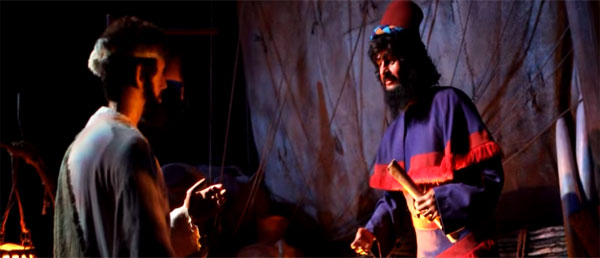
A remarkable part of the recurring changes to Spaceship Earth has been the consistent vibe across each version. There have been adjustments with the arrival of each narrator, but we can still see the connections across the attraction’s history. This is especially true in the Cro-Magnon and Egyptian scenes, which are similar despite technological and script changes. We’re still boarding our time machines and venturing back into the early days of communications. The vehicles progress slowly up the massive structure, and we experience an engaging attraction.
The most significant tonal adjustment to Spaceship Earth comes with the 2007 Judi Dench version. The change in sponsor to Siemens shifts the focus more to innovation, and Dench’s words try to present the story to younger audiences. The adjustments are subtle in the opening scenes, but we recognize the more grounded approach to the material. Jeremy Irons spoke in epic terms about this grand adventure, but Dench is talking more down to Earth. A big example arrives with a few lines that have become a standout from the current ride. It’s time to thank the Phoenicians!
A quick Google search reveals many fan designs featuring the phrase “thank the Phoenicians”. This Teepublic page shows examples of how this term has gained traction with Disney fans. The big question is whether this shift is good for Spaceship Earth or limits the experience. I’m all for fun catchphrases in Disney attractions, so it’s not a bad trend in general. Before we dive further into Dench’s narration, let’s take a look back at this scene in earlier versions.
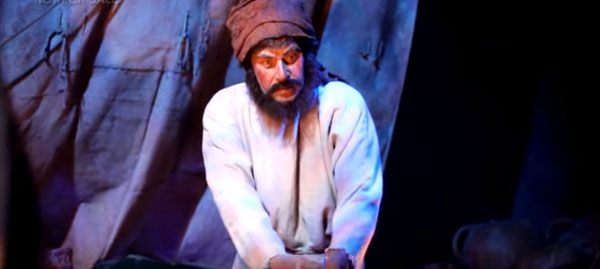
Fine Phoenician Ships
I’ve noticed during each scene just how succinct the first script was for Spaceship Earth. Ray Bradbury’s words introduced each scene with a quick statement from Vic Perrin. A perfect example is the description of the Phoenicians’ appearance. Perrin mentions the creation of the alphabet, but you could easily miss it if you aren’t paying close attention:
“On fine Phoenician ships, we take our scrolls to sea. Real scrolls simplified by an alphabet, eagerly shared at distant ports of call.”
This statement is less conversational and has real style to the way the words flow together. It’s less a complete narration and more a vocal accompaniment to what we see. This brevity keeps us focused on the show scene itself with the two ships arriving together. The exchange of goods by sea feels more important than Perrin’s comment about the alphabet; it’s really the means of transportation that allows the new form of communication to take place.
Cronkite’s narration shifts attention more to the alphabet and ability to keep records. It adds more words and flows well, but his description is a bit more grounded:
“The value of writing for accurate record keeping appeals to Phoenician merchants. They create an alphabet, simple enough for any to learn, and share this new tool at ports along the Mediterranean.
One reason for this change is Cronkite’s style of delivery as a nightly news anchor. He is a master at boiling complex material down to its essence for mass audiences. Both Perrin and Cronkite mention the sharing of the alphabet, but Cronkite calls it a “new tool” and ensures we understand its brilliant simplicity. The changes are subtle but set up the scene well.
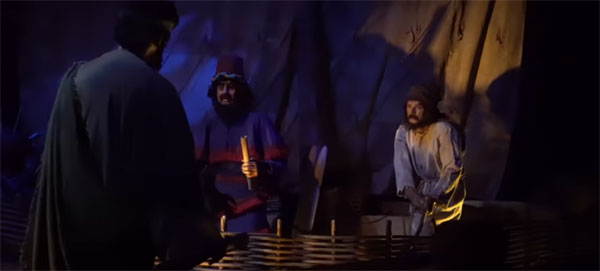
Exploring the Scene
After we exit the Egyptian scene, we quickly see the Phoenician merchant in a boat on our left. It’s a fairly large scene with effective lighting and a blue background to sell the water environment. It’s a simple conversation about trading and is largely unchanged over the years. The big improvement comes with the added music in the 1994 and 2007 versions. In particular, Bruce Broughton’s music for the current attraction adds to the sense of exploration in this section.
What’s interesting about this set-up is that it shows two people speaking about a trade, not directly using the written language. The description from Irons connects well to what we see from the Animatronics on this water scene:
“Phoenician merchants established the earliest commercial highways trading goods and information at distant ports of call. To aid in record keeping, they created the first common alphabet and shared this new tool across the Mediterranean.”
Irons focuses more on the commercial benefits through the highways and how the world expanded due to the Phoenicians. The alphabet is more about record keeping, which would be important for this type of trade. The visuals of this moment tell the story, which puts less emphasis on the script here. The stars following the boat also make for a nice transition to the next time jump.
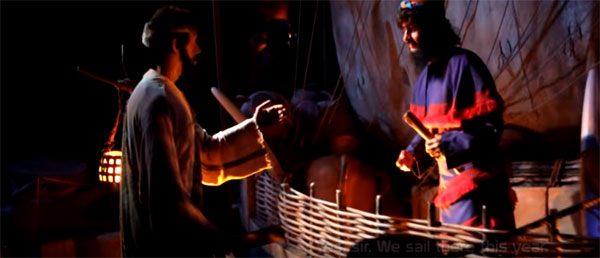
Significant Changes
We’ve circled back to the big moment where Dench gives a simple lesson about our ABCs. It’s a little dumb but far less jarring than a change a bit further into the ride. I don’t mind the effort to connect Spaceship Earth more to our daily lives. It’s also a memorable phrase that sticks with you after you leave the attraction. Few would remember this scene so clearly without this phrase. Here’s the full text from Dench with our important gratitude:
“At this point, each civilization has its own form of writing, which none of the others can understand. But the Phoenicians, who trade with all of them, have a solution. They create a simple, common alphabet, adaptable to most languages. Remember how easy it was to learn your ABC’s? Thank the Phoenicians—they invented them.”
The change begins up front, with little mention of the commercial routes established by the Phoenicians. George Lucas proved that no one cares about trade, so maybe this is wise. Instead, Dench focuses on writing, with only a brief mention of trade. This switch connects less to the scene that we witness, though it’s not a huge stretch to see how the writing benefits the deal on this ship.
According to Art Director Neil Engel, there were also updates to the details of this scene in 2007. These edits included replacing props on the boat and creating period Amphora (with “as wax” covers). Imagineers also removed the perspective set on the right side of the track. Engel mentioned how they improved animatronics’ movement to compensate for a broken boat rocker. The figures definitely have smoother animation in this version of the scene.
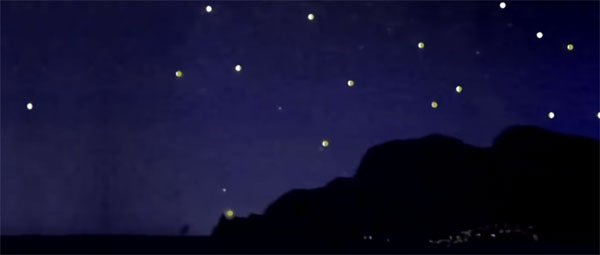
That’s What They Call Progress, Dear
The historical context is less prominent in today’s Spaceship Earth, and the innovation forward is the key point. This connects directly to the overall shift with Siemens as the sponsor towards large achievements and progress. Instead of providing a history of communications, we’re looking at how change occurred. The Phoenicians are still here, but it’s their alphabet that takes center stage given its relevance today.
Next time, we’ll join the ancient Greeks for a story and the birth of the theater. It’s a slow journey through our past, but huge changes are just around the corner.
Sources: INTERCOT, Martin’s Videos
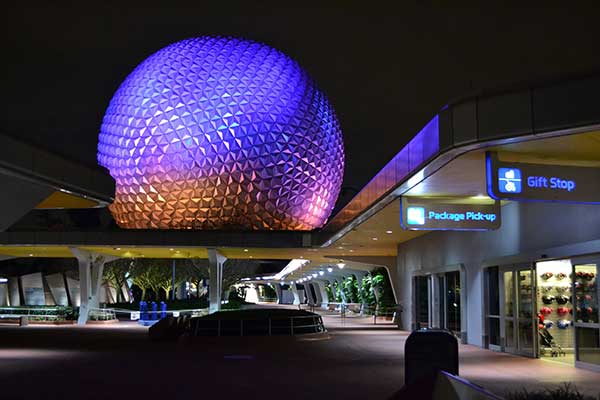
Related Articles: Thank the Phoenicians!
Spaceship Earth, Scene by Scene: The Introduction
Spaceship Earth, Scene by Scene: The Cro-Magnon



Enjoying this series, keep it up!
Definitely, thanks! I’m glad you’re enjoying them. It’s taking a bit longer than I’d like, but I’m slowly getting there.
Hi Dan! I am loving this scene-by-scene breakdown. Thank you so much for sharing such great information. You mentioned a perspective set removed by the Imagineers from the Phoenician scene. Do you recall what it depicted?
Hi John! Thanks for the comment. I’m not sure about exactly what was in the perspective set that was removed during the 2007 update. Neil Engel provided that information about what they changed to the scene and wasn’t that specific. I’ll have to take a closer look at the online videos of the Irons version and see if I can notice the difference.